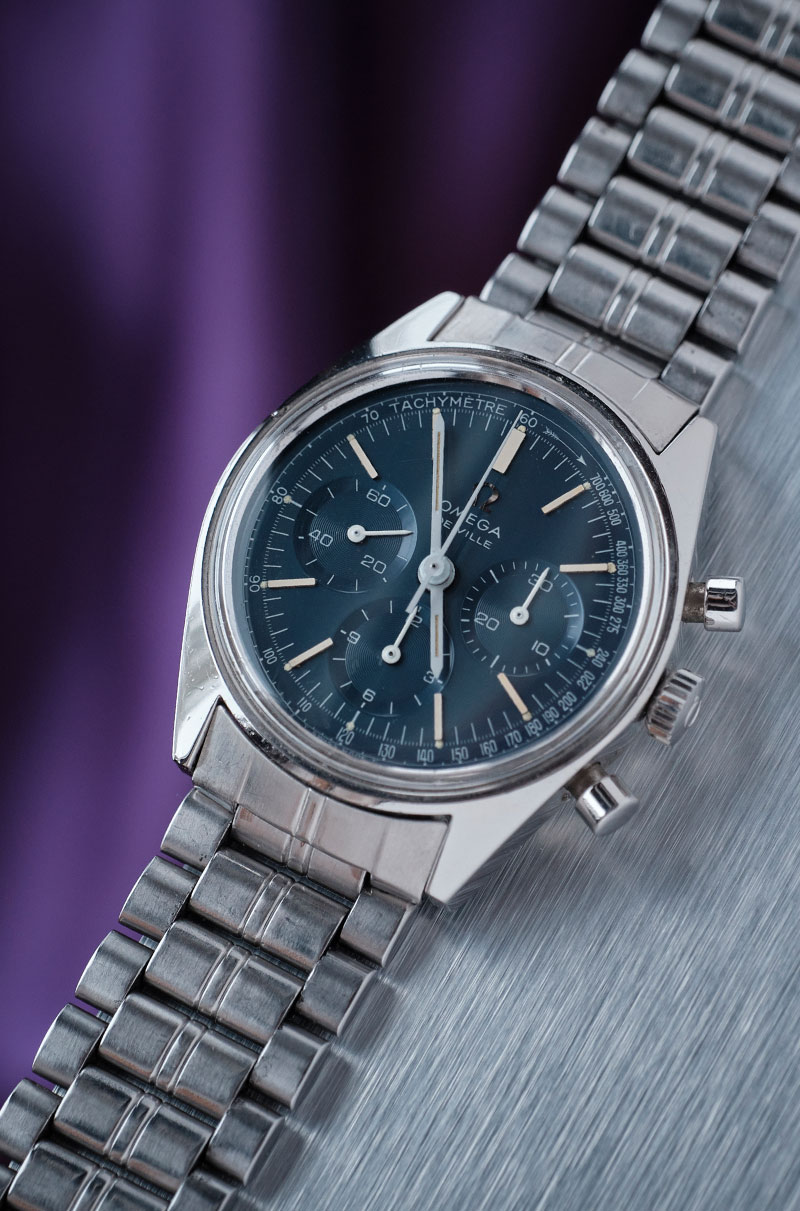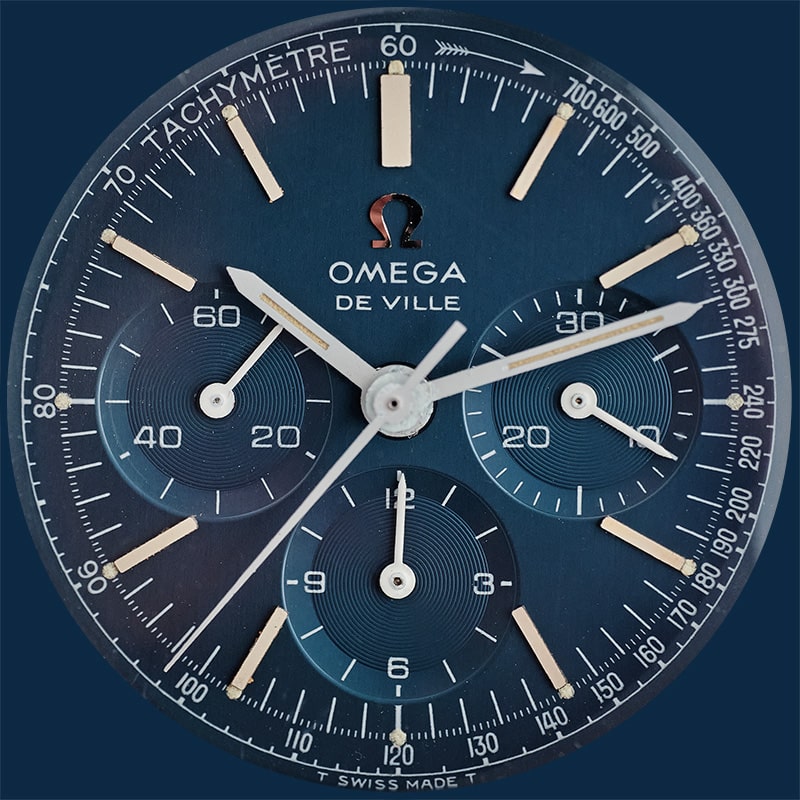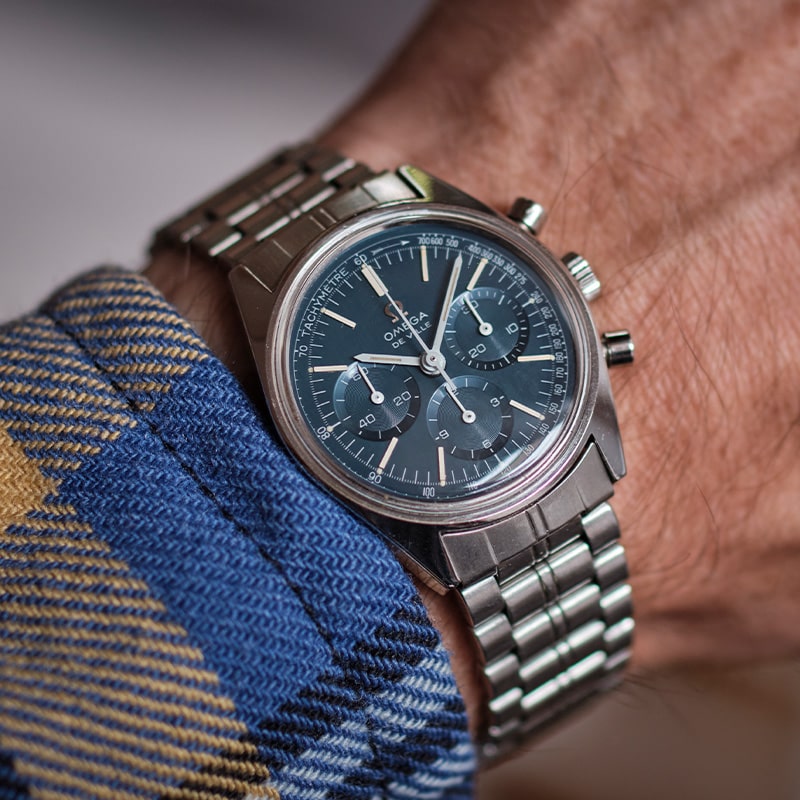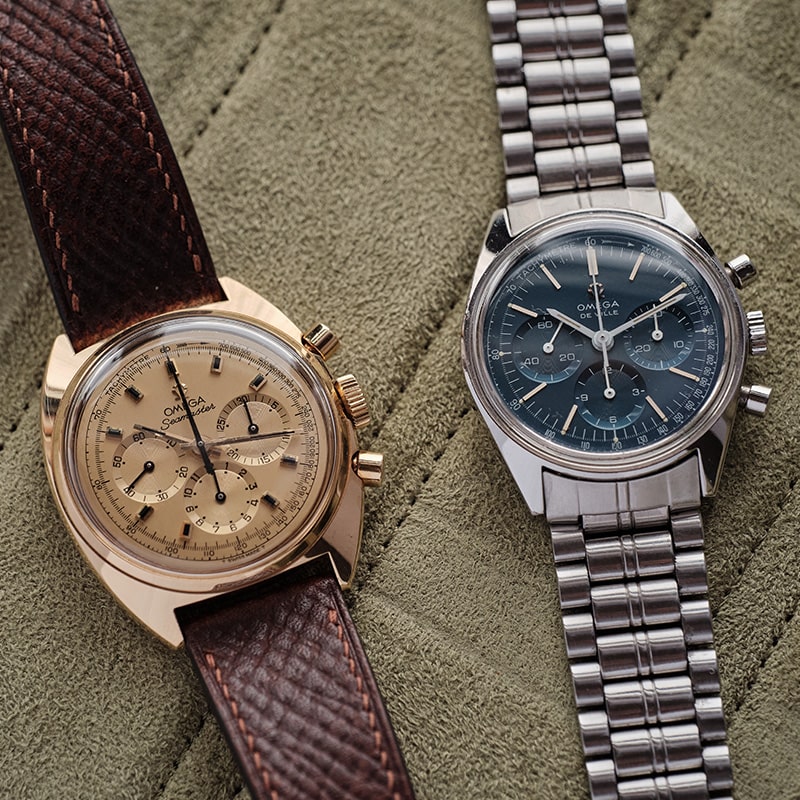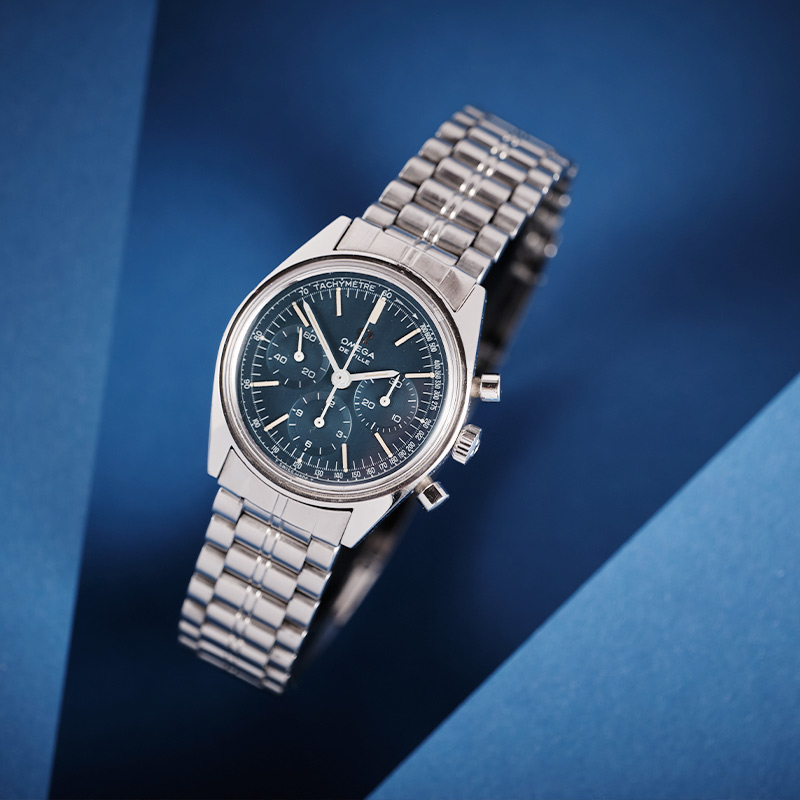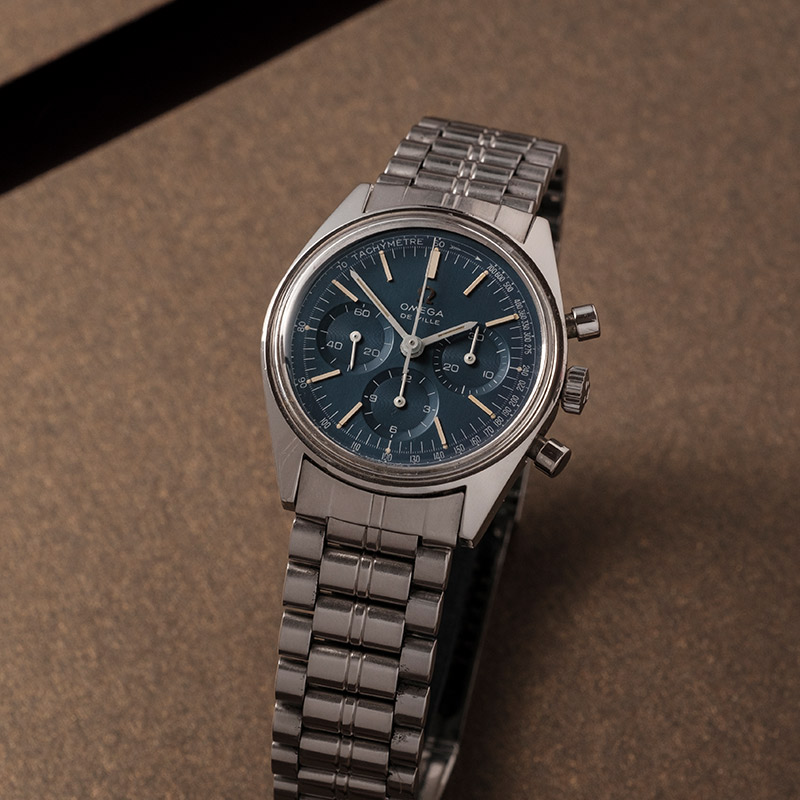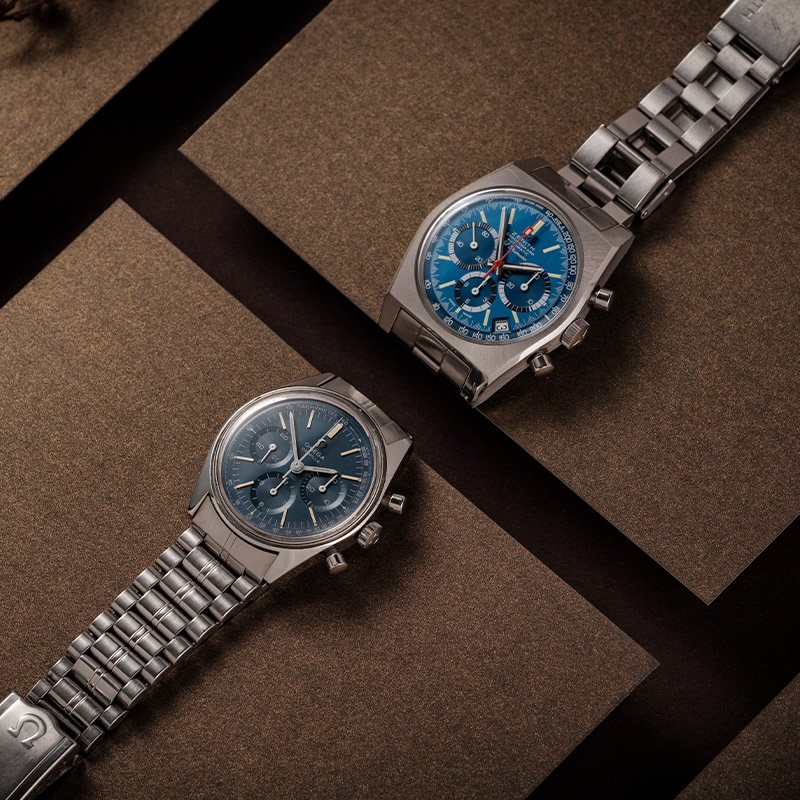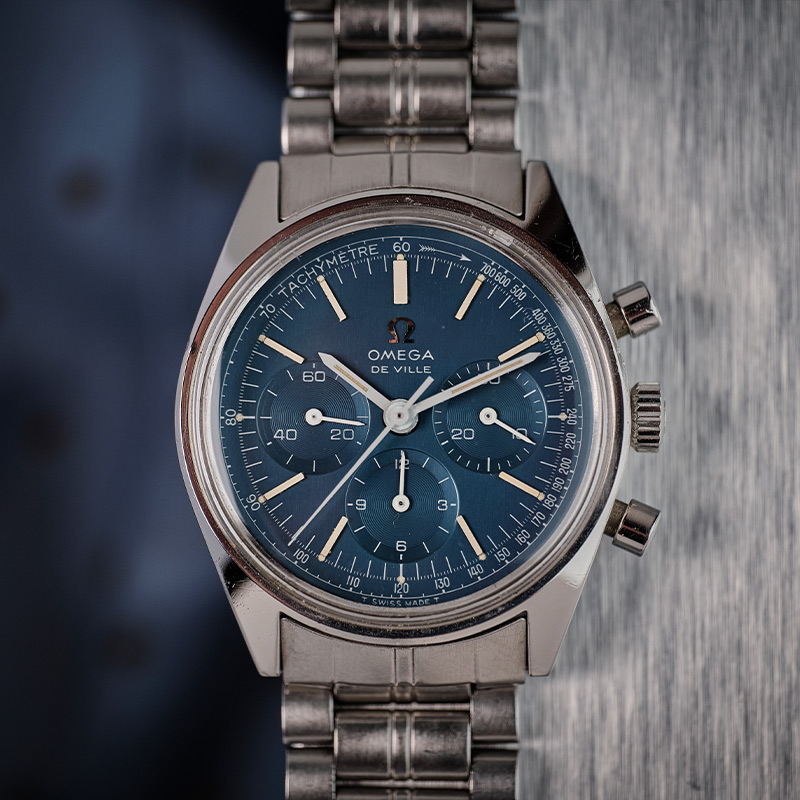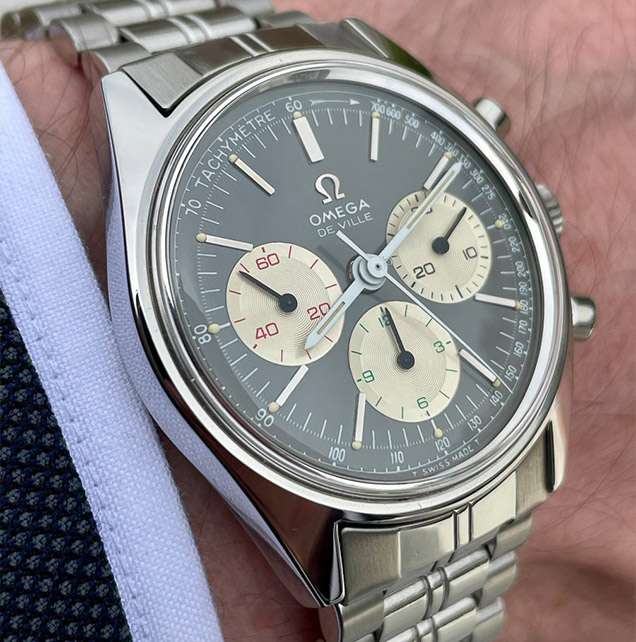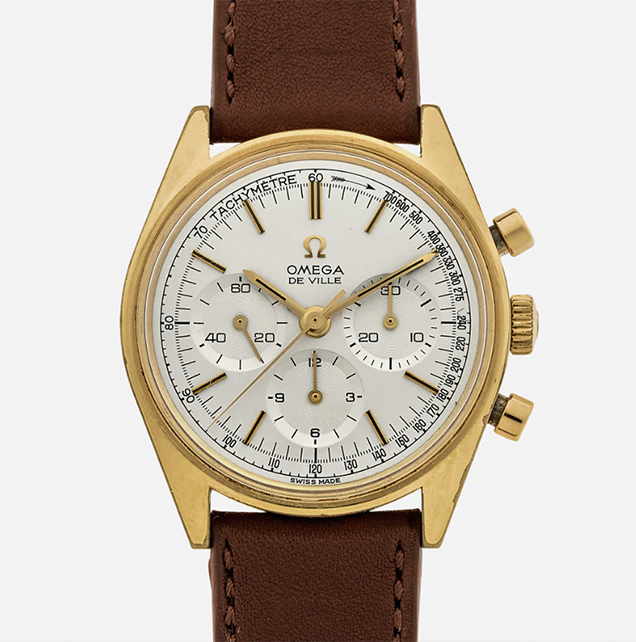Quick facts
Brand: Omega
Model: De Ville
Reference: 145.018
Year: 1969
Case: Stainless steel, 35mm, 12.7mm
Caliber: Omega 861, manual wound
What about it
The day I encountered this watch was a memorable one! Omega crafted this remarkable blue chronograph for a brief period, spanning only two years from 1968 to 1970. The unconventional selection of a blue dial was a unique and uncommon choice during that era.
The narrative behind 1968 De Ville Chronograph intertwines both its movement and design. In 1967, Omega took a significant step by establishing the De Ville as an independent collection. Prior to this, it had been an integral part of the Seamaster series since 1960.
Launched alongside the De Ville 145.017, the emergence of this De Ville chronograph series in 1968 was notably sparked by the introduction of Omega's caliber 860 and 861 movements. Reference 145.017 incorporated the caliber 860 with two sub-dials, while ref. 145.018 utilized the caliber 861 with three sub-dials. These cam-actuated chronograph movements marked the transition from the esteemed column-wheel caliber 321, establishing their own distinguished reputation over time. Omega deployed the caliber 861 across their Speedmaster, De Ville, and Seamaster chronographs.
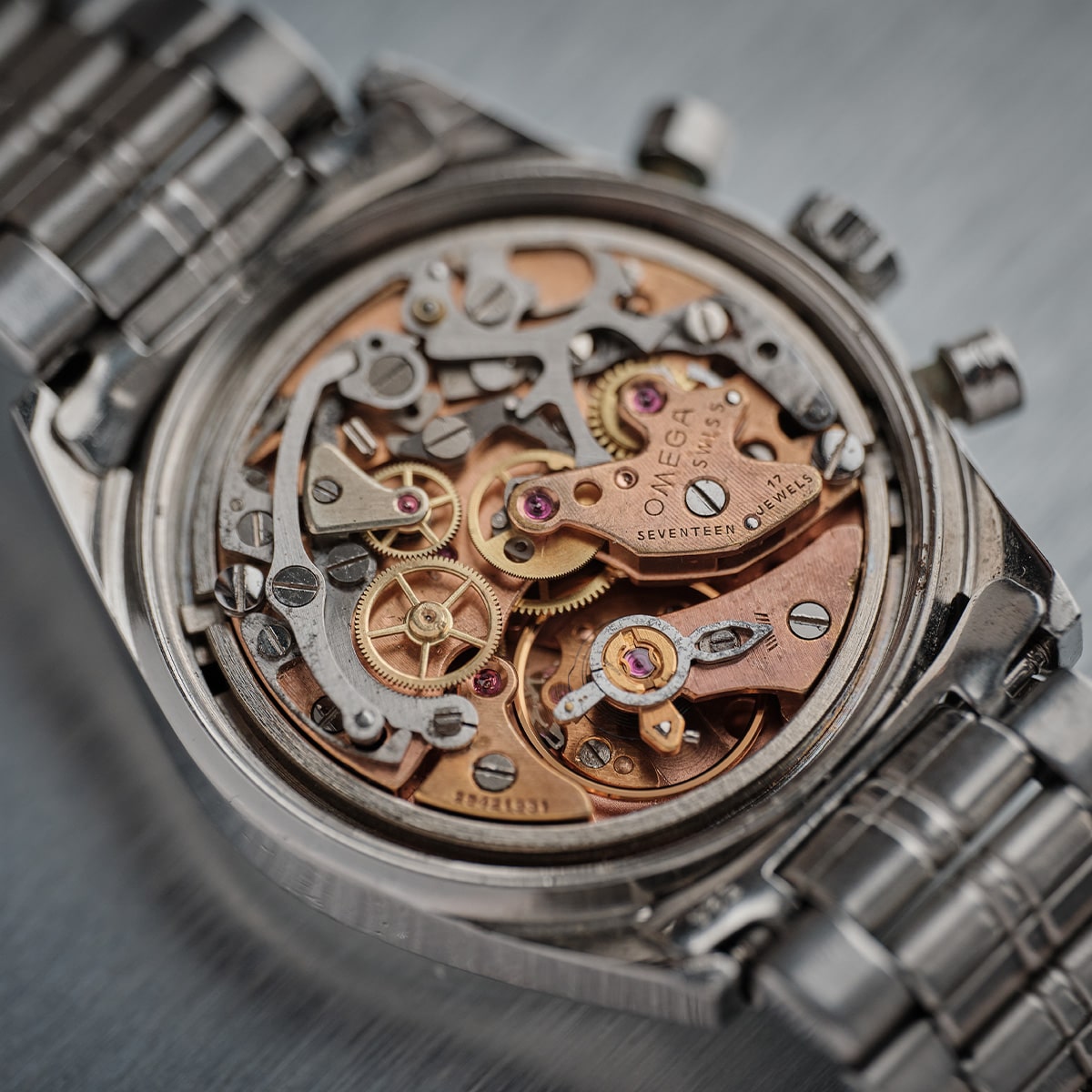
Omega caliber 861
Lemania created a family of cam switching chronograph movements in the 1960s just as chronograph watches were becoming more popular in the mass market. The Lemania Calibre 1873 was part of a family of similar 12 ligne movements, running at 21,600 A/h and lacking modern features like hacking seconds or automatic winding. In 1968, Omega selected the Lemania 1873 as the basis for their Cal. 861, used in the Omega Speedmaster Professional line of watches. These feature a 30 minute chronograph counter at 3:00, a 12 hour counter at 6:00, and small seconds at 9:00.
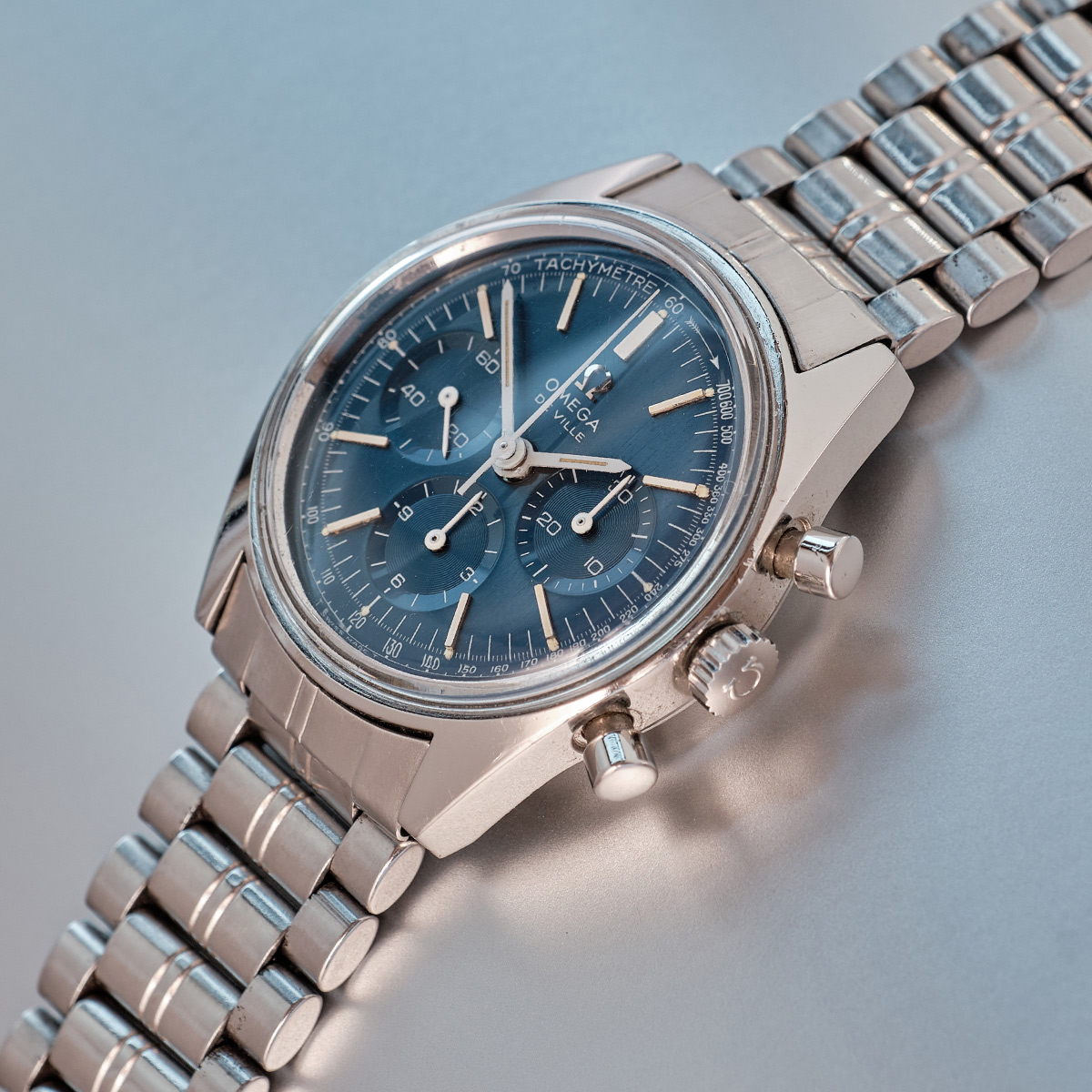
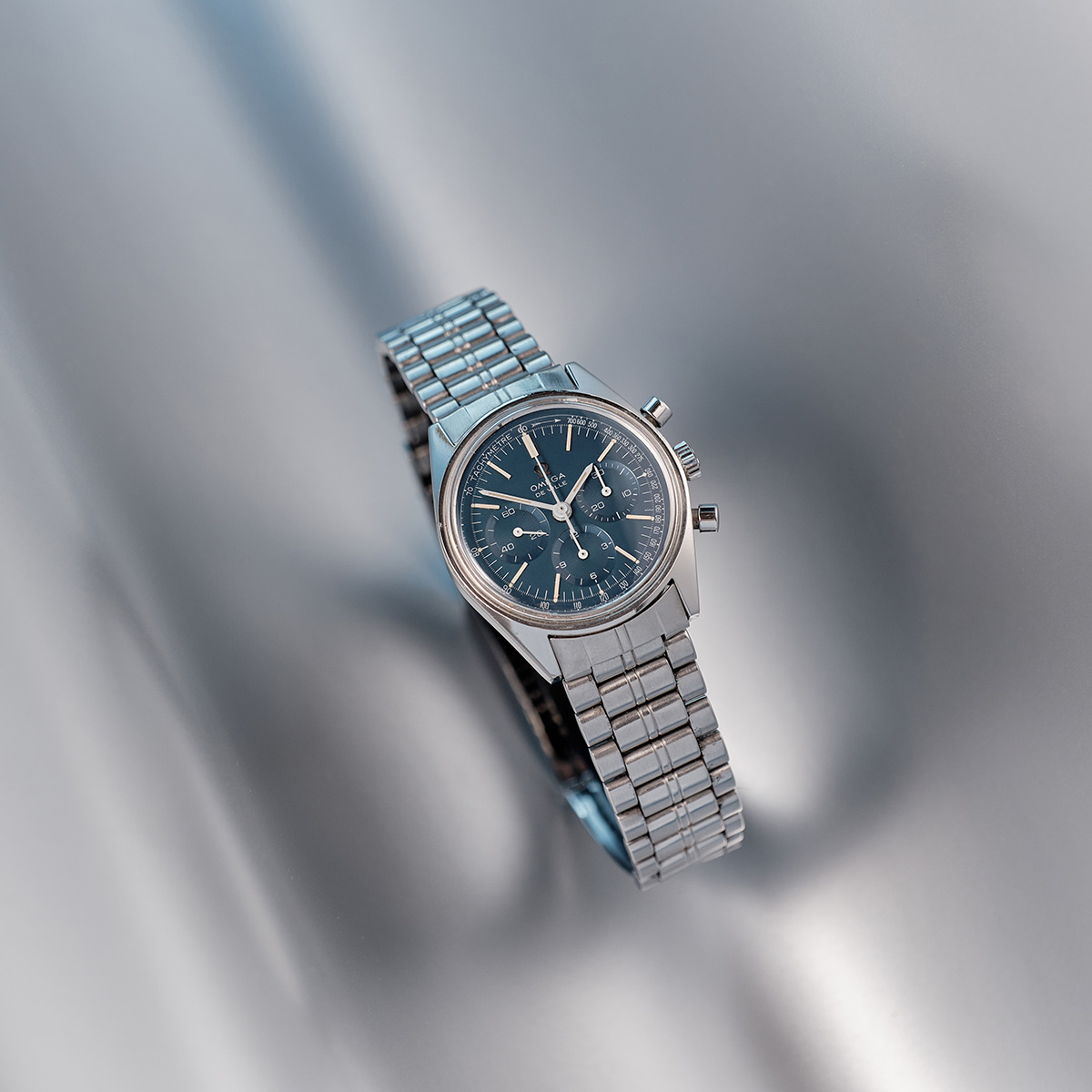
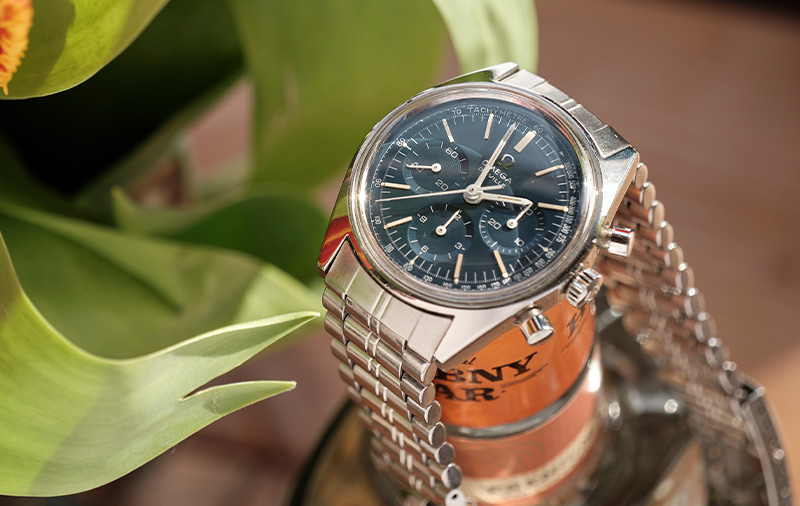
Blue, dark grey, white
The 1968 De Ville chronographs made their entrance with dark grey, white, and blue dials. Remarkably scarce are the reverse panda dials in dark grey. The blue dial graced both the 145.017 (a two-register chronograph) and the 146.017 (date at 9 o'clock). These painted dials are visually captivating, but often suffer from delicacy, being prone to flaking over time. Notably, the hour markers are painted on all dials except for the white variant.
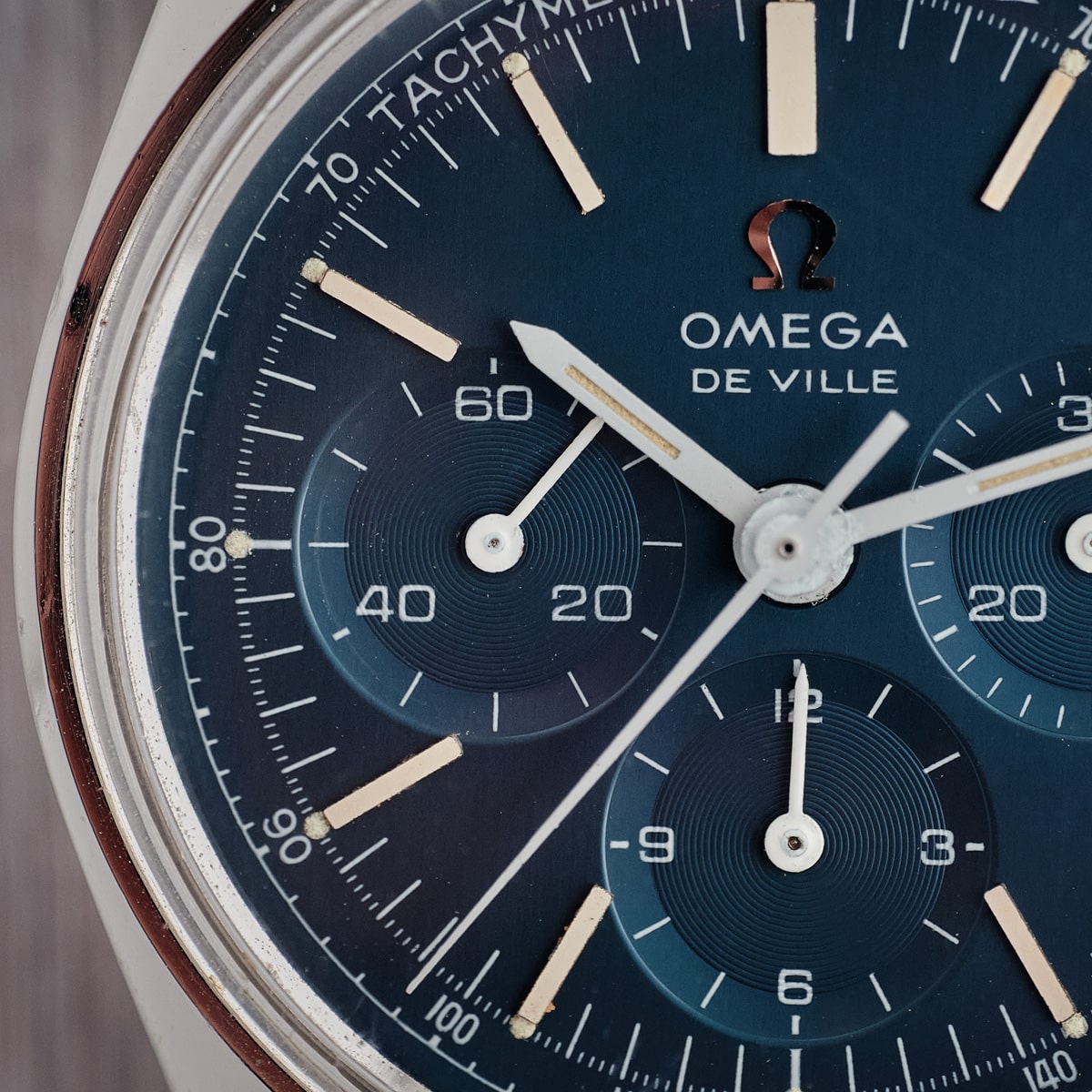
Variations
Market
Availability: Ultra rare
1 watch on sale
Pricing: 5,000 - 8,000 €
(Dec 2023)
References
Another Omega that deserves more praise and research. Nothing much written about it.
